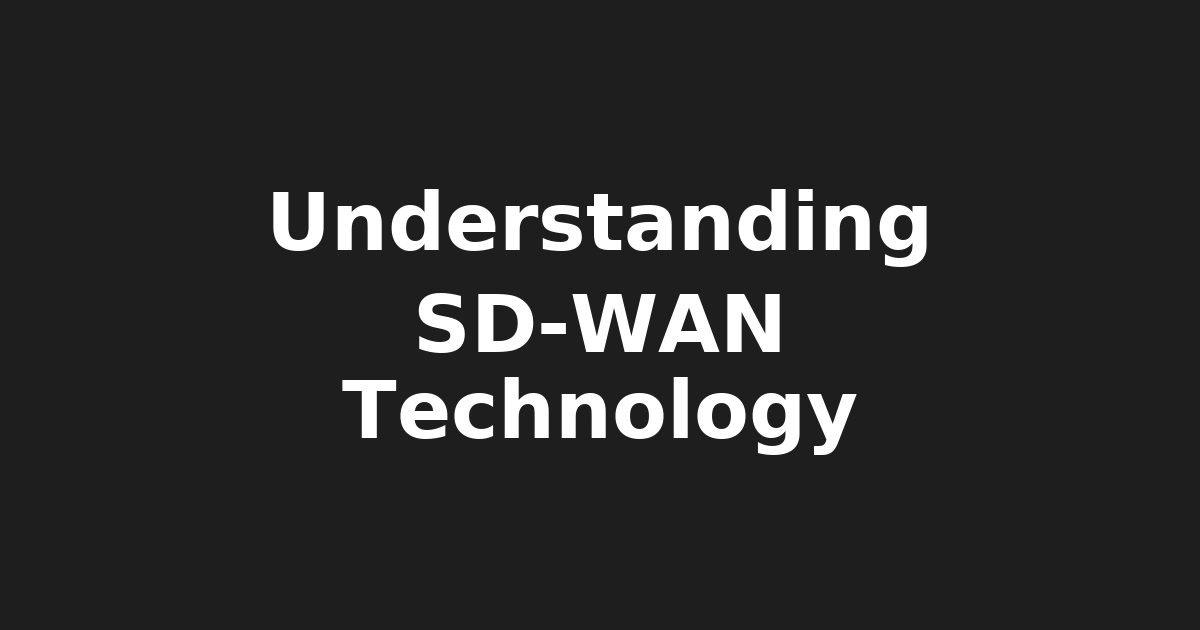SD-WAN: The Future of Wide Area Networking for IT Pros

SD-WAN: The Future of Wide Area Networking
In today's digital landscape, organizations face a multitude of challenges when it comes to managing their wide area networks (WANs). With the increasing adoption of cloud-based applications, remote workforces, and IoT devices, WANs need to be more agile, secure, and scalable than ever before. This is where SD-WAN (Software-Defined Wide Area Network) comes into play.
What is SD-WAN?
SD-WAN is a software-based approach to wide area networking that uses advanced network functions to manage internet broadband connections. It allows organizations to create a virtual WAN that can be managed centrally, making it easier to scale and secure their remote locations.
Key Features of SD-WAN
- Multi-Protocol Support: SD-WAN supports multiple protocols such as MPLS, Internet, and LTE, allowing organizations to integrate different connectivity options.
- Centralized Management: SD-WAN platforms provide centralized management capabilities, making it easier to monitor, troubleshoot, and scale the network.
- Advanced Security Features: SD-WAN platforms offer advanced security features such as firewalling, encryption, and intrusion detection to protect against cyber threats.
- Hybrid Network: SD-WAN allows organizations to create a hybrid network that combines different connectivity options, providing flexibility and scalability.
Benefits of SD-WAN
- Improved Network Agility: SD-WAN enables organizations to quickly scale their network up or down as needed, reducing latency and improving application performance.
- Enhanced Security: SD-WAN provides advanced security features that help protect against cyber threats, reducing the risk of data breaches and other security incidents.
- Cost Savings: SD-WAN can reduce network costs by optimizing bandwidth usage and eliminating unnecessary connections.
Trending Use Cases
- Cloud-First Networks: Organizations are adopting cloud-first networks that use SD-WAN to connect remote locations to cloud-based applications.
- Internet of Things (IoT) Connectivity: SD-WAN is being used to connect IoT devices to the internet, enabling real-time data collection and analysis.
- Remote Workforce Security: SD-WAN is being used to secure remote workforces by providing advanced security features and centralized management capabilities.
Relevant Tools
- VeloCloud: A cloud-based SD-WAN platform that provides multi-protocol support, centralized management, and advanced security features.
- CloudGenics: An open-source SD-WAN solution that provides flexible deployment options and advanced security features.
- VMware SD-WAN by VeloCloud: A cloud-based SD-WAN platform that provides multi-protocol support, centralized management, and advanced security features.
Market Trends
According to a recent report by Forrester, the SD-WAN market is expected to grow from $2.3 billion in 2020 to $8.4 billion by 2025, at a Compound Annual Growth Rate (CAGR) of 38.1%.
Conclusion
In conclusion, SD-WAN is an essential technology for organizations looking to improve their WAN agility, security, and scalability. With its advanced features and benefits, SD-WAN is becoming increasingly popular in the networking community.
References
- Forrester: "SD-WAN Market 2025"
- VMware: "VMware SD-WAN by VeloCloud"
- CloudGenics: "CloudGenics SD-WAN"
By leveraging SD-WAN, organizations can unlock a more agile, secure, and scalable WAN that supports their evolving needs.
